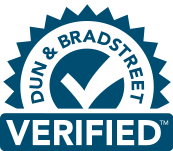If you’ve ever had to train your employees on anything relating to your organization, you understand the importance of creating compelling, engaging training content. When you create concise, clear, and easy to consume training material, you increase the chances that your team members will successfully retain the information. One way to optimize your training content’s effectiveness is to distribute the content through employee training videos.
Benefits of Employee Training Videos
There are multiple benefits to conducting your team’s training courses in video format, including:
- Your team can watch it from multiple locations – either in the office or remotely.
- You don’t need to have everyone taking the training in one place at the same time – videos can be viewed virtually by multiple people at once.
- It’s an effective and balanced way for viewers to take in information. The Cognitive Theory of Multimedia Learning states that “working memory has two channels for information acquisition and processing: a visual/pictorial channel and an auditory/verbal processing channel.” Video stimulates both channels to avoid overloading one at the expense of another.
So while the benefits of creating employee training videos are apparent, that doesn’t mean creating a great video is easy. Here are some best practices on how to create engaging corporate video content to help train your employees.
Plan It Beforehand
You may want to have a concisely written script for your video. Or you may opt for more of a conversational, off-the-cuff and improvised sort of feel. No matter what direction you’d like your content to take, you should plan out the structure of your video before you begin.
That might mean writing a word-for-word script you’d like to follow. Or if you want something a bit more naturalistic, it might mean writing an outline of the topics you want to cover and improvising when the camera is rolling. Whatever path you choose, you need to have the content planned out before you begin to ensure it’s consistent and valuable.
You’ll also need to perform a quality assurance check on your scripts and outlines before production begins. Review the content with your company leadership to ensure the training material conveys the right messaging. It should align with your company’s current policies, procedures, or guidelines. You’ll want to be sure you bake in your company’s unique selling point and mission statement into your content.
There’s nothing worse than putting a lot of effort into creating a video only to realize you made an error later. That means you’ll have to spend time and money to re-record and fix it. Planning helps you avoid that, catching mistakes during the pre-production stage.
Select an Engaging Format That Best Fits Your Content
The format of your video will depend on the type of content you’re trying to convey to your team members. There are several types of formats your training videos can take. You can opt for one, or if the situation calls for it, use several different formats integrated with each other. Below are some examples:
A Talking Head
This is a video of you, or someone within your organization, speaking directly to the camera to convey the information in the training course. Think of yourself as a virtual teacher in front of the classroom that is anyone watching the video from your organization.
Roleplay
In a roleplay video, an actor (or actors) will demonstrate a scenario the viewer needs to either learn from. Roleplay can be useful when showing your audience how to perform a specific task or procedure within your company. It can also be used to demonstrate what NOT to do, by acting out ethical or security violations and asking the viewer to identify what was wrong with the scene.
Interactive Formats
Interactive videos are where you allow the audience to guide the direction of the course. You can record a variety of videos that give the viewers on options to choose from for the follow-up video. This is great for testing your viewers to see how well they’re absorbing the information – choosing the wrong option can lead you to an incorrect answer, which tests the viewer’s comprehension.
Place an Emphasis on Production Quality
You may be relieved to hear that your training videos don’t need to have the cinematic excellence of a Martin Scorsese or Steven Spielberg film. Your focus should be on producing a video that highlights the valuable information your employees need. Striving for perfection isn’t necessary.
But that doesn’t mean there isn’t a standard of production quality you need to reach. You need to make sure the picture is clear enough for the viewers to see what is being either taught, explained, or demonstrated. You also need to ensure the audio is clear enough that they can hear all the dialogue on the video. Some even believe that sound quality is more important than picture quality.
Audio and/or visual issues can lead to potential problems with your audience’s ability to understand the content.
This means checking for small precautions before, during, and after your production of the video. Perform a sound check with your audio equipment to ensure you’re capturing all discussion clearly. Make sure your camera is in focus so the presentation doesn’t look blurry.
Your employee training video doesn’t have to look or sound like a Hollywood movie. However, you do need to have content that clearly communicates the messaging you’re trying to impart with minimal disruptions.
If You’re Going to DIY, Do It Right
If your goal is to create your training video yourself, resources exist that can enable you to do it. It’s never been less expensive to purchase video or audio equipment – for example, pretty much any smartphone will have a working camera that records HD video. You can do it yourself if that’s the path you want to pursue.
But having the tools available doesn’t mean you’ll be able to use them the way they’re intended. To get the most value out of your video, it helps to have expertise in the finer points of video production. Knowing how to create the optimal video is the key to creating content that resonates with your team. It takes expertise to do it well. So while you can do it yourself, you have to make sure you do it right.
Learn More about Creating Effective Employee Training Videos
When looking to create a training video, it helps to partner with an expert provider who understands the ins and outs of video production. That’s where Digivid360 can help. We can help make your training video production easier while also ensuring the highest quality output. For more on how we can help, contact us today!






